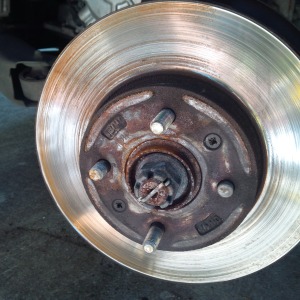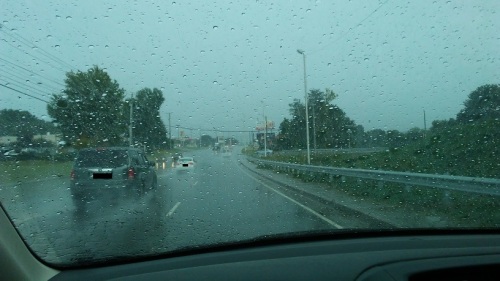This slideshow requires JavaScript.
When it comes to the concept of development & grasping a better understanding on how to commute from your home to a specific location, in a manner that doesn’t enrage your fellow commuters, one cannot forget to consider the many laws that licensed driver’s of the USA are expected to abide by daily. This friendly blog will help illustrate an intelligent, safe, and easy way to approach your daily commute from home to work; or where ever else one’s obligations and responsibilities lead them to from day to day. When commuting from point A to Z, it’s very important for motor vehicle operators to be able to distinguish the difference between the passing lane and the slow lane.
The commuter lane, or better known as the slow lane, is the initial lane that every licensed driver must adhere to, upon highway entry. In the slow lane, all traffic speed laws are to be enforced. On the contrary, sometimes commuters are forced to make unconventional decisions upon discerning which lane to select. Here’s some helpful hints, when faced with these types of situations:
- (A) Enter onto the highway by way of the slow lane; causing everyone to make evasive moves to commute around you.
- (B) Enter onto the highway by way of the fast lane, and remain there at a commutable pace until the line of traffic commutes by you.
- (C) Wait on the line of traffic to pass and enter onto the highway by way of the slow lane.
To be quite honest, there is no right or wrong answer. For example, in illustration A – if your car has the horsepower to enter onto the highway and speed away from the line of traffic without breaking any major speed laws, by all means execute this process. On the other hand, if your car doesn’t have the horsepower or you don’t have the confidence to push the pedal to the metal – please revert to illustration C, as you could pose as a potential hazard. Defensive drivers are all to familiar with the tactics illustrated above, and it is the aim of this blog to educate the ‘common commuter’ on some of these easy, but responsible means of driving within congested areas of two to six lane highways.
In the past couple years, I’ve taken noticed to motor vehicle operators staking claim on the fast lane. These individuals apparently either have never taken the driver’s education course or skimmed over that part of the driver’s exam. In the defense of the ‘baby boomers’, most of these individuals owned cars before the legal age to vote, so a mild exception can be made there. However, the need to be refreshed on the basic fundamentals of driver’s etiquette can not be excused. The left lane or farthest lane from the right is not the same as the commuter lane. It is not the “chill lane”. It is not the lane designated for handicapped drivers. It is not the lane designated for flashy autos with nice rims. It is not the lane for heavy trucks or 18-wheelers. It is not the lane for mini-vans or SUVs. If the car in front of you is going slower than the three second rule allows, then by all means pass them. However, after passing – resume your commute within the slow lane or until a slot becomes available. If your left turn is inevitably approaching, then of course take your position and strike your blinker approximately 100 feet prior to exiting the highway. What this does is alleviate the ‘sudden panic’ situation where everyone’s brake lights – light up like dominoes. Initiating the pre-turn blinker turn will alert your fellow commuters, alleviate the panic, and make for a more smoother transition for everyone. As a result, they’ll respectfully pass by, and unconditionally be thankful for you conscientiousness…
In my opinion, the only other time the left lane is to occupied in a fashion where the motor vehicle operator is traveling at the same rate of speed as the other commuters within their designated lanes is when a state trooper or any other means of law enforcement is out in front leading the pack. Don’t dare pass the state trooper or county patrolman, unless you want a ticket! Metaphorically speaking, this situation should be regarded the same way as when the pace car enters onto a motor speedway track of auto racing event. For example, during a NASCAR race the pace car will lead the first couple laps of the race, before exiting the track. Adopt this principle and wait for the state trooper to exit the interstate… Also, when faced with a scenario of the contrary by which one discovers that a law enforcement vehicle is coming up from behind, it would be not only polite, but moreover – wise to get over into the commuter lane, and allow them to pass unimpeded. Trust me: they will remember….
Also, I can’t emphasize enough how important it is to obey traffic laws like speed limits, but in our great country a certain degree of leniency is tolerated. While these gracious margins of error like speeding five miles over the posted speed limit exists, they are not to be abused. Obviously, driving under the influence is unacceptable and has no place in the overall realm of things, so don’t drink and drive! Oh by the way, the best way to execute a turn on RED without getting a camera ticket is to STOP, ROCK & ROLL. As long as you come to a complete stop, when you begin to roll this is considered yielding. And as for four way STOP(s), the rule of thumb is whoever comes to a complete stop at their stop sign first, goes first. If you are unsure, use your flashers to initiate a polite gesture for your fellow commuter to proceed forward.
You might not understand the FULL significance of this blog initially, but it will sink in when you’re on your way to work or to an appointment one day. You’ll realize that there are way too many people out joy riding, and apparently have nothing else better to do than to get a kick out of getting YOU frustrated by seemingly blocking every effort of headway that you try to make in an attempt to get closer to your desired destination. If we all could abide by these rudimentary ways of traveling, our highways and byways would have less ‘road rage’, less stress, and fewer automobile accidents. Also, whether it’s a state law or not, turn your lights on when it’s raining because it helps everyone else around you see you from a ‘rear view mirror’ perspective. Thanks for reading my blog! I hope it was insightful, as well as entertaining. God Bless!
Morris E. Coad



